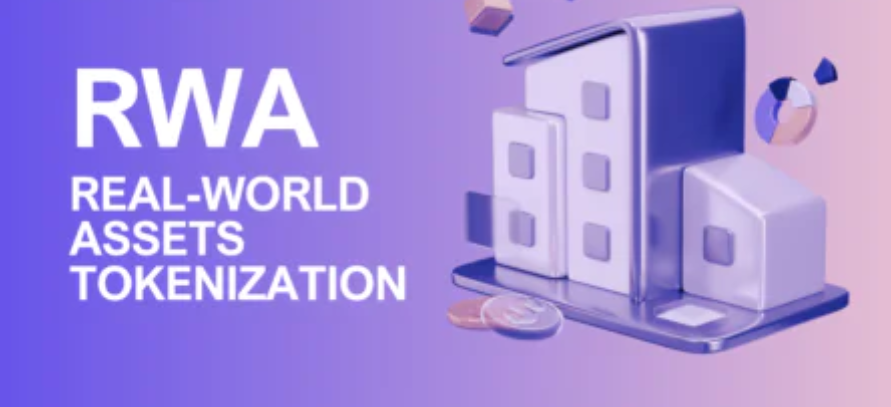The financial world is on the brink of a revolution, where owning a piece of a luxury apartment in Manhattan, a masterpiece artwork, or a rare collectible becomes as easy as trading stocks or cryptocurrencies. This is the power of asset tokenization a technological leap poised to reshape global financial markets by addressing long-standing liquidity challenges.
In today’s fast-evolving fintech landscape, RWA tokenization development (Real World Asset tokenization) is gaining momentum as the bridge between traditional finance and the digital economy. But the pressing question remains: can asset tokenization platforms truly resolve the stubborn issue of global illiquidity? Let’s dive deep to uncover the potential, challenges, and future of this transformative approach.
Understanding Global Illiquidity
Global illiquidity refers to the difficulty in converting certain assets into cash or readily tradeable securities without significantly affecting their market price. Traditionally, assets like real estate, fine art, private equity, and collectibles suffer from illiquidity because:
- High Transaction Costs: Legal fees, taxes, and intermediary commissions make transactions cumbersome.
- Lengthy Settlement Periods: Traditional sales of physical assets can take months.
- Limited Market Access: Often, only a niche group of investors have access to such high-value assets.
This illiquidity poses significant barriers, locking trillions of dollars worth of assets in stagnant states, inaccessible to mainstream investors.
What is Asset Tokenization?
Asset tokenization refers to converting ownership rights of tangible and intangible assets into digital tokens that exist on a blockchain. These tokens represent fractional shares of an asset, making it easier to buy, sell, or trade even small portions of traditionally illiquid assets.
For instance, tokenizing a $10 million property into 1 million tokens means an investor could own a fraction of the asset for as little as $10. This democratizes access, enabling a broader investor base.
The Role of Asset Tokenization Platforms
Asset tokenization platforms serve as the technological backbone enabling the creation, issuance, and trading of asset-backed tokens. These platforms incorporate blockchain technology to ensure transparency, immutability, and security.
Key features of robust asset tokenization platforms include:
- Smart Contracts: Automate compliance, payments, and distribution of profits.
- Regulatory Compliance Tools: Ensure adherence to regional and international financial regulations.
- Secondary Market Integration: Facilitate trading of tokens on licensed exchanges, enhancing liquidity.
- Fractional Ownership Capabilities: Allow investors to buy or sell fractional interests in various asset classes.
This is where asset tokenization platform development cost becomes a consideration for businesses aiming to enter this space. Costs typically range from $50,000 to $500,000, depending on the complexity, regulatory requirements, security features, and integration with existing financial systems.
Tackling Global Illiquidity Through Tokenization
Asset tokenization platforms offer a compelling solution to global illiquidity by:
1. Broadening Access to Investments
Tokenization lowers the financial entry barrier, allowing a larger and more diverse pool of investors to participate in markets previously reserved for the wealthy.
2. Enabling Faster Transactions
Blockchain-powered platforms significantly reduce the time and paperwork involved in transferring asset ownership, allowing real-time settlement of transactions.
3. Creating Secondary Markets
With tokenized assets, secondary markets can thrive, enabling investors to liquidate their holdings faster compared to traditional asset markets.
4. Increasing Transparency and Security
Blockchain’s inherent transparency ensures that every transaction is recorded on a public ledger, reducing fraud and enhancing investor confidence.
Challenges in Achieving Full Liquidity
While the potential is vast, several challenges remain:
- Regulatory Hurdles: Different countries have varying regulations surrounding tokenized assets.
- Technological Barriers: Scalability, interoperability between platforms, and cybersecurity remain technical challenges.
- Market Education: Both investors and asset owners need to understand the benefits and risks of tokenization.
- Valuation Complexity: Determining fair market value for unique assets like art or collectibles can be difficult.
Overcoming these challenges requires collaboration between regulators, technology providers, and financial institutions.
Real Estate: A Key Use Case for Tokenization
Among all asset classes, real estate tokenization development stands out as a primary candidate for addressing illiquidity. Real estate investments have traditionally been illiquid due to high transaction costs, legal complexities, and the sheer value of properties.
Tokenizing real estate assets allows:
- Fractional Ownership: Reducing the minimum investment threshold.
- Global Market Participation: Investors from various geographies can participate without being physically present.
- Streamlined Transactions: Faster, cheaper, and more transparent property transactions.
Real estate tokenization also aids in portfolio diversification, enabling investors to own fractions of properties worldwide.
Cost Analysis: Building an Asset Tokenization Platform
Understanding the asset tokenization platform development cost is essential for businesses considering this technological shift. Factors influencing cost include:
- Platform Architecture: Custom-built vs. white-label solutions.
- Blockchain Selection: Public blockchains like Ethereum or private consortium blockchains.
- Regulatory Compliance Modules: Integration of KYC/AML systems.
- Smart Contract Development: Automating workflows and compliance.
- User Interface & Experience: Designing an intuitive, secure, and accessible platform.
For a basic tokenization platform, development costs can start from $50,000 for a white-label solution, whereas a custom-built platform with advanced features can range upwards of $200,000 to $500,000.
The Future Outlook of Asset Tokenization
The future of asset tokenization platforms looks promising with increasing institutional interest and regulatory clarity. Innovations in blockchain scalability, cross-chain interoperability, and regulatory sandboxes are paving the way for broader adoption.
Key Trends to Watch:
- Integration with DeFi: Tokenized assets entering decentralized finance protocols for lending, staking, and yield farming.
- AI and Analytics: Leveraging AI for better asset valuation and risk management.
- Global Standardization: Efforts to create universal standards for tokenization.
Industry experts predict that by 2030, asset tokenization could unlock $16 trillion worth of illiquid assets, fundamentally transforming global finance.
Conclusion
In summary, asset tokenization platforms present a robust and scalable solution to tackle global illiquidity. By enabling fractional ownership, enhancing transparency, and facilitating faster transactions, these platforms democratize access to wealth creation opportunities.
Particularly, real estate tokenization development has emerged as a game-changer, offering a path to liquid markets for an inherently illiquid asset class. While the journey involves navigating regulatory landscapes and technological barriers, the destination promises a more inclusive and efficient financial system.
For businesses eager to explore this transformative technology, partnering with a seasoned development firm can streamline the journey. Suffescom Solutions Inc. stands out with its expertise in blockchain and tokenization technologies, offering tailored solutions to build next-generation asset tokenization platforms. Whether you’re looking to tokenize real estate, art, or private equity, our end-to-end services ensure secure, compliant, and scalable platform development.


